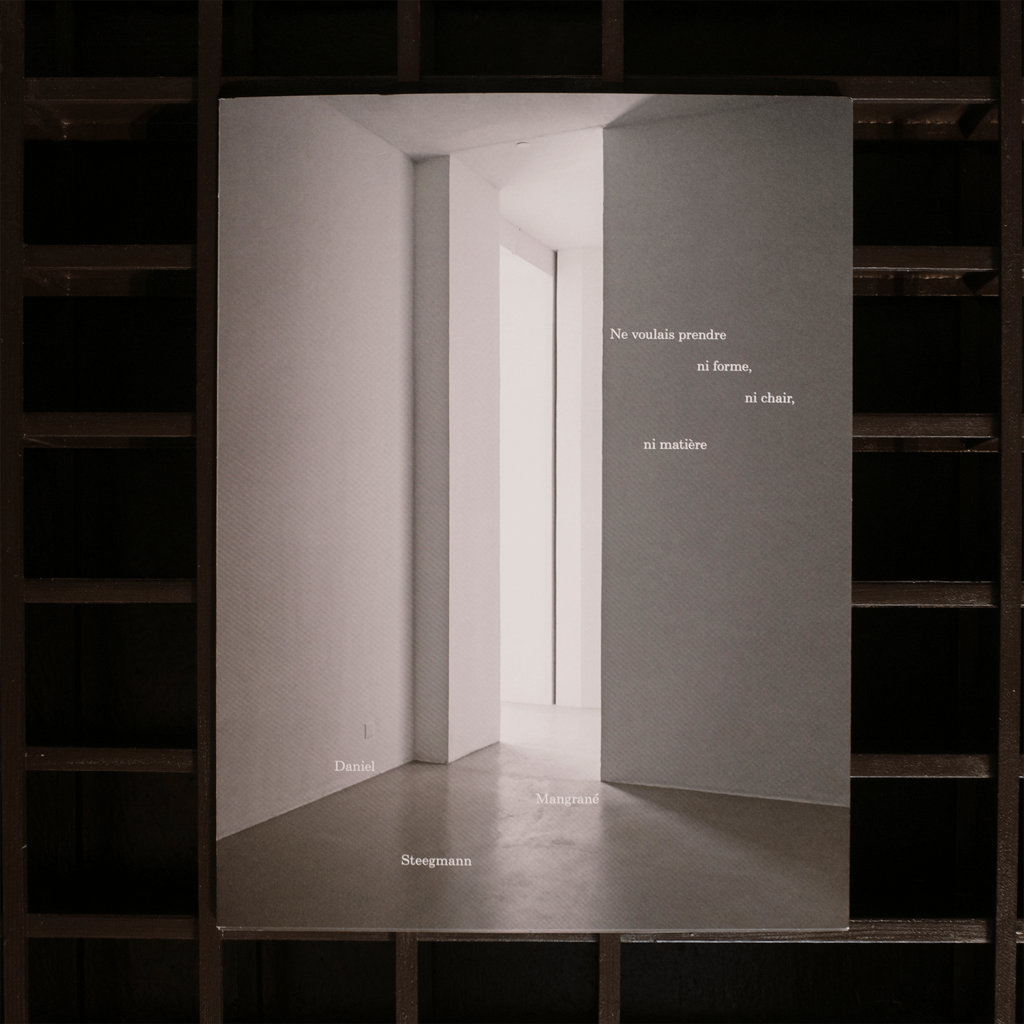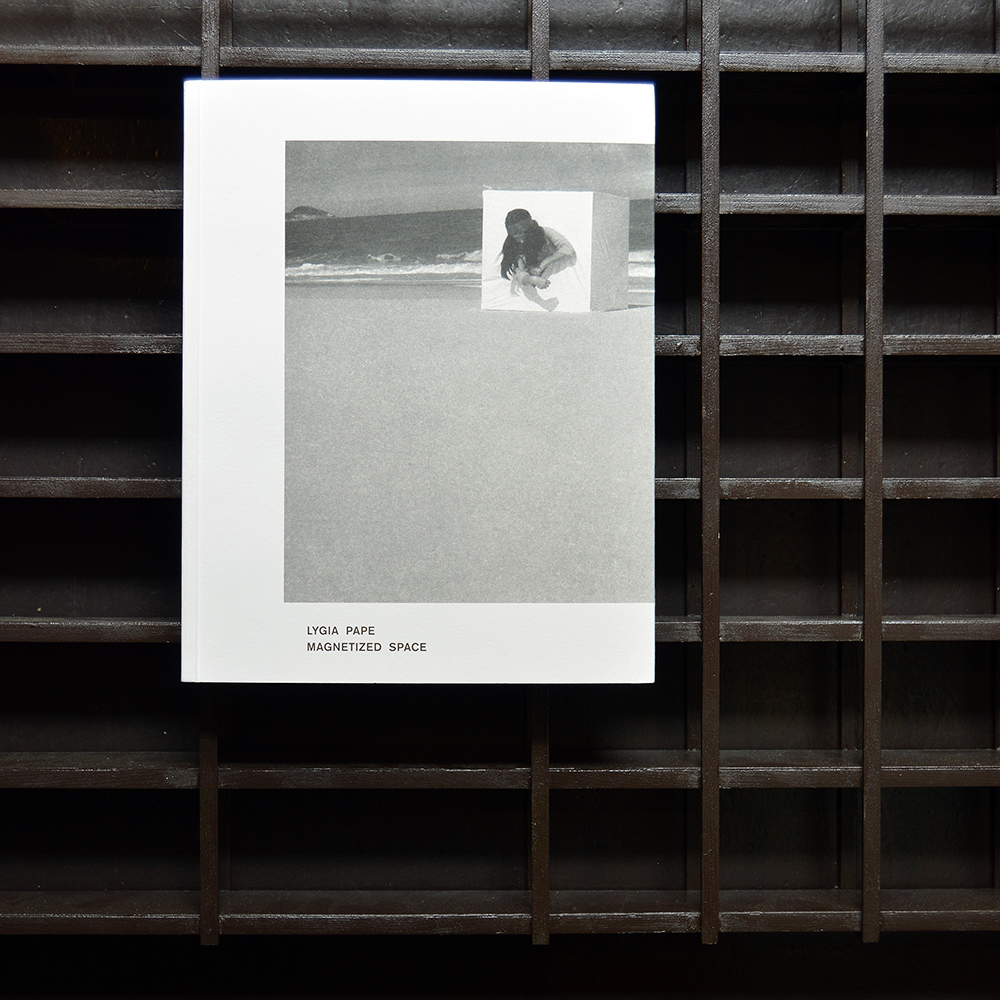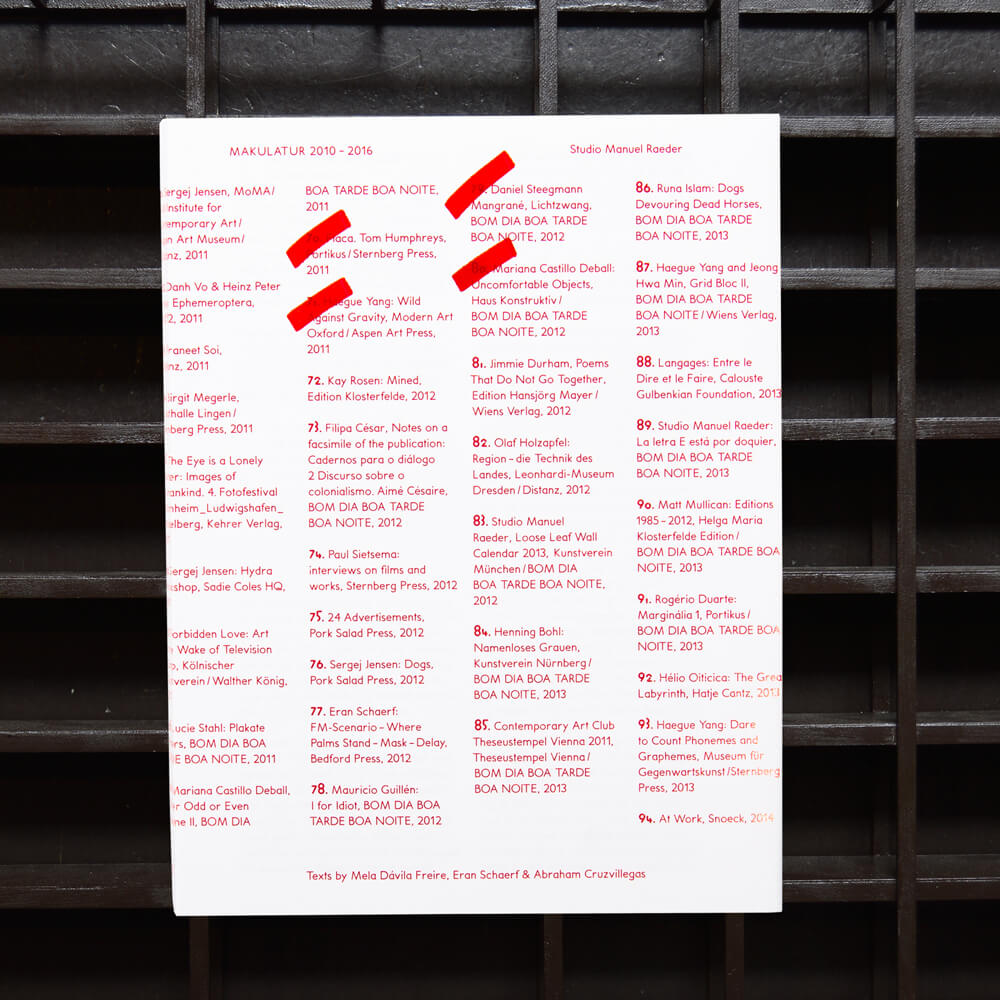** Our bookshop in Berlin-Mitte has closed ** Orders available only via www.bomdiabooks.de **

€45,00

The positions adopted by Hito Steyerl in her works and texts are of key importance in any consideration of the contemporary role that art and the museum play in society. They are also crucial to experimental forays into different forms of media presentation and to the critical examination of artificial intelligence and its uses. Over the past thirty years, the artist has been tracking the way camera images have mutated, from the analogue image and its manifold possibilities for montage to the fluidity of the split digital image and the implications this then had for the representation of wars, genocides, and capital flows. “We are no longer dealing with the virtual but with a confusing and possibly alien concreteness that we are only beginning to understand,” writes Brian Kuan Wood of the digital visual worlds that the artist presents. The book is being published in conjunction with Hito Steyerl’s survey show, which will take place in autumn 2020 at the Centre Pompidou in Paris and the Kunstsammlung Nordrhein-Westfalen in Düsseldorf. The cooperative project is funded by the German Federal Cultural Foundation. ↑ ↓ ↓
€36,00
SOLD OUT

In 2011, the Contemporary Art Club (CAC) in cooperation with the Kunsthistorisches Museum Wien (KHM, Museum of Fine Arts Vienna), organised an exhibition series at the Theseustemple, a classicist building constructed at the beginning of the 19th century in Vienna’s Volksgarten. The project was launched with an exhibition by Andy Hope 1930, followed by Kitty Kraus and André Butzer. The series concluded with a dialogue between Lucy McKenzie and Ian Hamilton Finley, a complex and diverse group of young contemporary artists. This publication aims at documenting this experiment. Accordingly, also the concept to this exhibition series, the basis for the discussion initiated by CAC with the participants, will be published. ↑ ↓ ↓
€26,00

This publication documents the exhibition “Ne voulais prendre, ni forme, ni chair, ni matière” by Daniel Steegmann Mangrané at the Institut d'Art Contemporain de Villeurbanne, France in 2019. The catalogue includes first translations into French of the poems of Stela do Patrocínio, a Brazilian outsider poet who has longly inspired the artist in his research. Daniel Steegmann Mangrané has created a polymorphous work (drawing, sculpture, film, installations, etc.). His arrival in Brazil in 2004 was motivated by his fascination for the Amazonian forest – as a child he wanted to be a biologist, an entomologist or a botanist – as well as his discovery of Brazilian artists, Lygia Clark and Hélio Oiticica. Beginning at end of the 1950's, for the founders of the Neo-Concrete movement, intuition, subjectivity and public participation managed to reconcile outdated dualisms, starting with the commonly acknowledged opposition between object and subject. Also nourished by anthropology and the poems of Stela do Patrocínio, one of which inspired the title of this exhibition; in his work Daniel Steegmann Mangrané mixes natural and cultural forms. He explores how the living is entangled with its environment, experimenting with space as an area of the sensitive and of relationships. Impregnated by the Amerindian perspective of anthropologist Eduardo Viveiros de Castro – who blurs the distinction between human and non-human – and by the thinking of Philippe Descola who strives to go beyond the Nature-Culture dualism, Daniel Steegmann Mangrané intends to totally and profoundly transform the space of the IAC. And so, the path of the exhibition generates new vanishing lines, changing perspectives which open out towards the exterior. Defined by a sensitive geometry, driven only by rays of natural light that penetrate the gloom, it encourages exploration and groping and fumbling, as if willing visitors to rediscover the essence of the living itself. This path through the exhibition also translates the artist's fascination for the notion of dissolution, a dissolution of the subject which is likely to lead to an awareness of its surroundings. ↑ ↓ ↓
€24,00

Taking as its starting point Robin Fior’s personal collection, which was recently donated to the Calouste Gulbenkian Foundation’s Art Library, the exhibition Robin Fior. Call to Action/Abril em Portugal brings together, for the first time, objects conceived by the graphic designer both in England and Portugal, between the 1960s and the 1980s. The publication that accompanies the exhibition includes the contribution of Robin Kinross, author and editor of several essays and publications on visual communication and typography. His essay explores the beginning of Fior’s career and his English period, as well as his connection to the anti-nuclear campaign and his link to left-wing political movements. ↑ ↓ ↓
€10,00
SOLD OUT

In this collection of stories and illustrations, Anna M. Szaflarski examines the subject of violence, in particular as it is experienced through the female body. Beginning with an autobiographical experience, the story triggers a dissociative state that plunges the book in and out of imaginary worlds and associative narrative threads. ↑ ↓ ↓
€25,00

Brazilian artist Lygia Pape was a founding member of the Neo-Concrete movement, which was dedicated to the inclusion of art into everyday life. Her early work developed out of an interest in European abstraction, however, she and her contemporaries went beyond simply adopting an international style, and started to draw on their own local situation. Neo-Concretism is often seen as the beginning of contemporary art in Brazil, and Pape's work—which focus on the coming together of aesthetic, ethical, and political ideas—has formed an important part of Brazil's artistic identity. ↑ ↓ ↓
€40,00
SOLD OUT

Makulatur, a German word that derives from lat. maculatura ’something stained’, refers to misprinted paper that is discarded at the beginning of the printing process as use- and worthless. In 2010, the graphic designer Manuel Raeder started to collect and preserve misprinted sheets of all the publications he designed not only for his own publishing house BOM DIA BOA TARDE BOA NOITE but also for fellow artists and institutions. These original waste paper sheets, with different qualities and grammatures, – trails, testy or stains – were combined to a new volume as a compilation of maculae ’stains’. Thus, dissolving the spoiled material from the realm of invisibility and displays it to the public whereby the Makulatur book reveals and reflects on the conventions of a book. ↑ ↓ ↓
€34,00